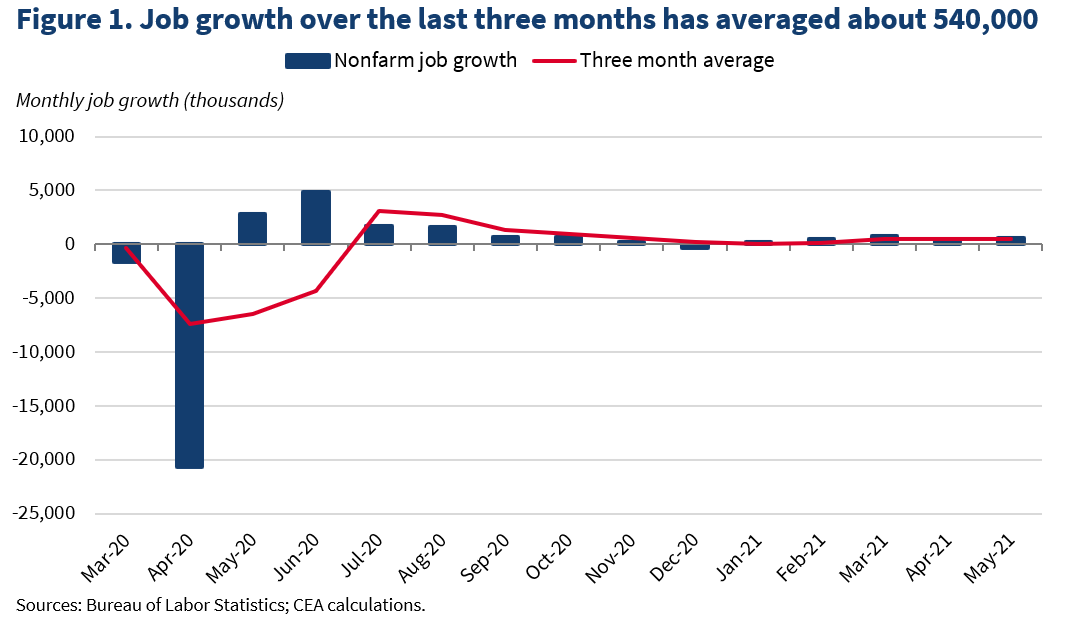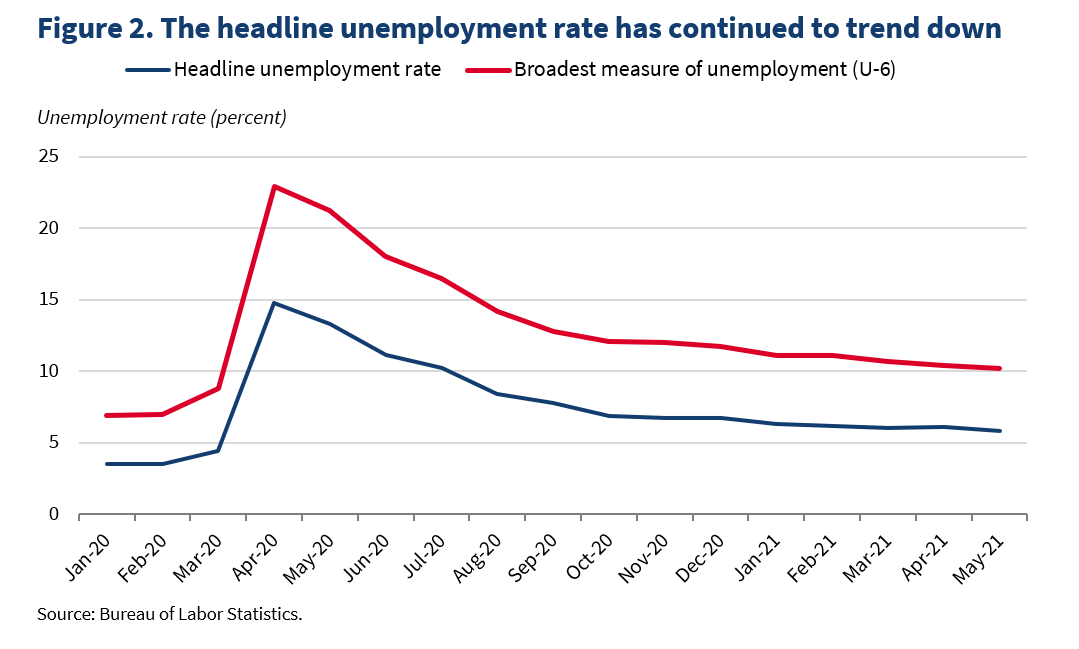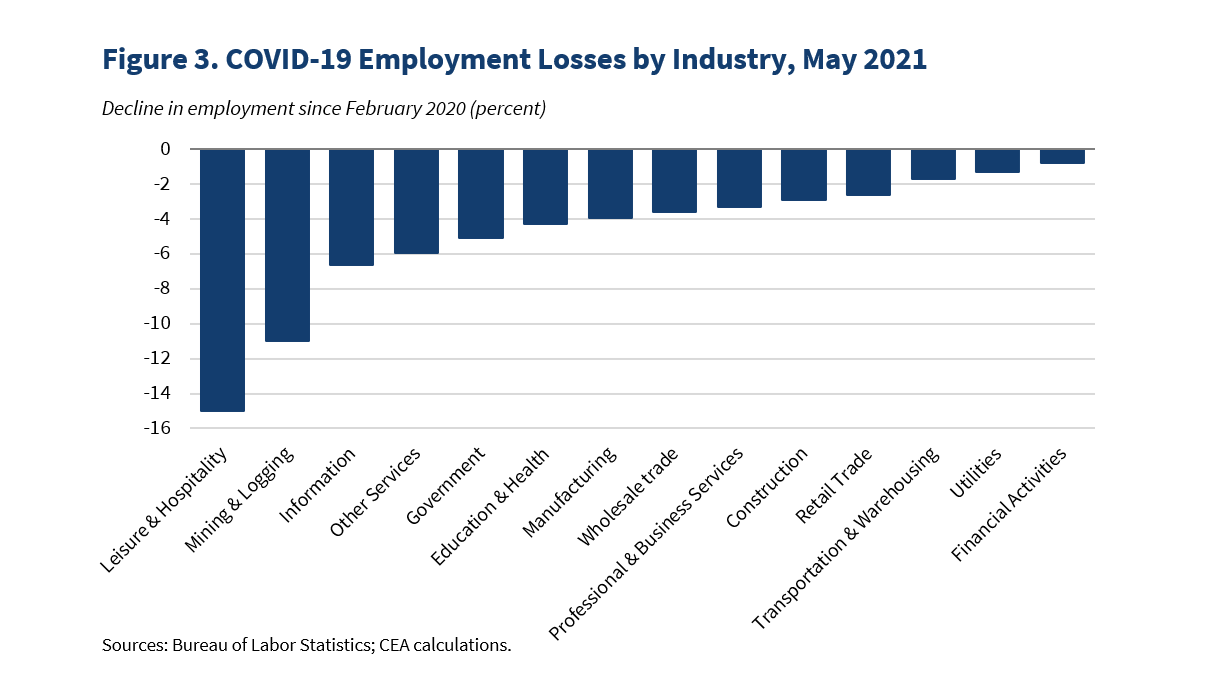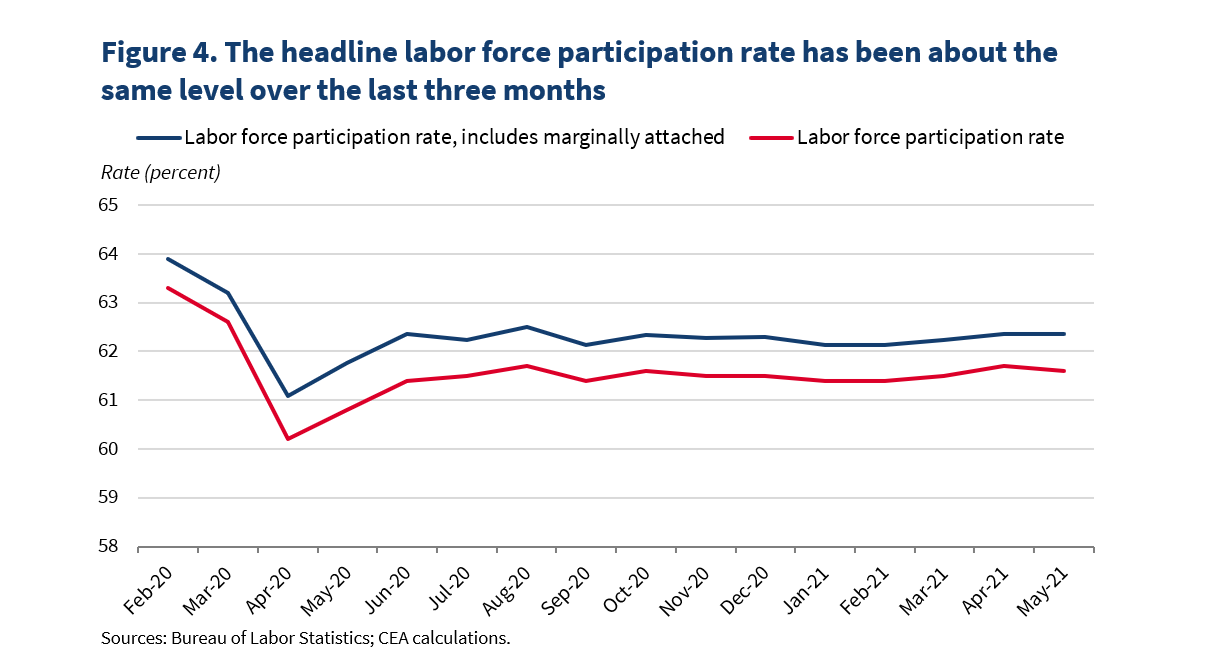The Employment Situation in May
By Chair Cecilia Rouse
Today’s jobs report showed the economy added 559,000 jobs in May, for an average gain of about 540,000 over the last three months.The unemployment rate fell to its lowest rate in the pandemic, continuing its trend downward, while the labor force participation rate ticked down slightly. Despite the addition of 1.6 million total jobs over the past three months, our economy remains about 7.6 million jobs below its pre-pandemic level. Month-to-month job growth can be volatile.
- The three-month average of job growth was about 540,000.
Average job growth is currently around 540,000 jobs a month (see Figure 1). It is important to pay more attention to this three-month moving average to understand the trend, rather than focus on the data in a particular month since those numbers can be volatile. While volatility has come down in recent months compared to the early months of the pandemic, it is still high relative to where it was pre-pandemic.

- The unemployment rate fell below 6 percent for the first time in the pandemic, continuing its trend downward.
The headline unemployment rate fell to 5.8 percent, its lowest rate since March 2020, resuming its downward trend after ticking up in April (see Figure 2). A broader measure of unemployment (U-6)—which includes people who are working part-time for economic reasons and people who are out of the labor force but would like a job—also fell to its lowest rate in the pandemic, but remains in double digits.

- The bulk of the jobs added in May were in leisure and hospitality, with additional gains in government and other services.
Leisure and hospitality added 292,000 jobs in May, by far the most of any industry (see Figure 3). It has led job growth for the last four months. Total government added 67,000 jobs; State and local education added 103,000, although State and local government employment outside of education lost 25,000 jobs. Government employment is still 1.2 million jobs below where it was pre-pandemic, and State and local education employment is now 800,000 below its pre-pandemic high.
At the sector level, the worst hit industry has been leisure and hospitality, with 15 percent fewer jobs than in February 2020. No major industry is back to its February 2020 employment level.

- Labor force participation ticked down slightly to 61.6 percent. Labor force participation can bounce around month-to-month but has averaged 61.6 percent over the last three months.
While labor force participation usually falls in U.S. recessions, this recession has been unusual in its labor force declines. Lingering concerns about contracting the coronavirus, child care, and school disruptions have prevented many from participating in or reentering the labor market.
In May, the labor force participation rate ticked down but has hovered around 61.6 percent for the last several months (see Figure 4). Labor force participation fell by 0.6 percentage point for teenagers, which impacted the slight decrease in the overall labor force participation rate, although the teen labor force participation rate is still almost a full percentage point higher than it was in March 2021. Labor force participation inched down by 0.2 percentage point for men and up by 0.2 percentage point for women, meaning that overall adult labor force participation functionally held steady.
While the headline labor force participation rate ticked down in May, a broader measure that includes the marginally attached held steady at 62.4 percent.

Indicators of labor availability for employers in the report were mixed, and it is too soon to conclude that labor supply issues are holding back the long-term path of the recovery. On the one hand, while labor force participation failed to rise, indicating some people remain on the sidelines, wage growth rose 0.5 percent month-over-month. This may in part reflect wage pressure as employers seek to entice workers back into the labor force.
On the other hand, the number of part-timers who would prefer full-time work was largely unchanged and average weekly hours did not increase. Typically, in a period of constrained labor supply, employers and workers might adjust along this so-called “intensive margin” by adding more hours of work when new workers are scarce, but this did not happen on average in May.
As the Administration stresses every month, the monthly employment and unemployment figures can be volatile, and payroll employment estimates can be subject to substantial revision. Therefore, it is important not to read too much into any one monthly report, and it is informative to consider each report in the context of other data as they become available.

